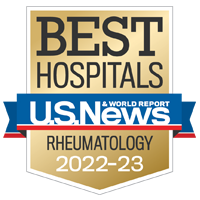
Osteoporosis
Osteoporosis is typically considered a "woman's disease," but 2 million of those with the disease are men. In fact, about 30 percent of hip fractures occur in men, and one in eight men over 50 years of age will experience an osteoporotic fracture. Osteoporosis affects an estimated 10 million people and almost 34 million have low bone mass, putting them at increased risk for developing osteoporosis.
Today, we know much more about diagnosing, preventing and treating osteoporosis as well as the condition's resulting complications. In addition to estrogen, other medications are available to control the disease.
Our Approach to Osteoporosis
By detecting and treating osteoporosis early, or preventing it from developing in the first place, we can help patients avoid future fractures and debilitation.
UCSF is equipped with state-of-the-art bone density scanners and a team of specialists dedicated to helping patients keep their bones as healthy as possible throughout their lives. Depending on the individual case, the care team may include experts in orthopedic surgery, rheumatology, endocrinology, radiology, nephrology, nutrition and physical therapy. Together, they create comprehensive treatment plans to slow or even reverse progression of the disease.
In addition to caring for patients, our researchers have been working for decades to discover risk factors for fractures and to test new diagnostic technologies and treatments, many of which are now standard tools for managing osteoporosis.
Awards & recognition
-

Among the top hospitals in the nation
-

Best in Northern California for diabetes care & endocrinology
-

One of the nation's best for orthopedic care
-

Best in California for rheumatology
UCSF Health medical specialists have reviewed this information. It is for educational purposes only and is not intended to replace the advice of your doctor or other health care provider. We encourage you to discuss any questions or concerns you may have with your provider.





